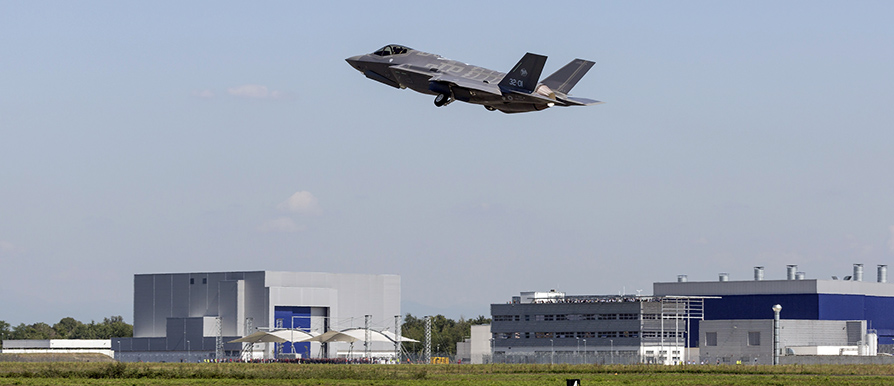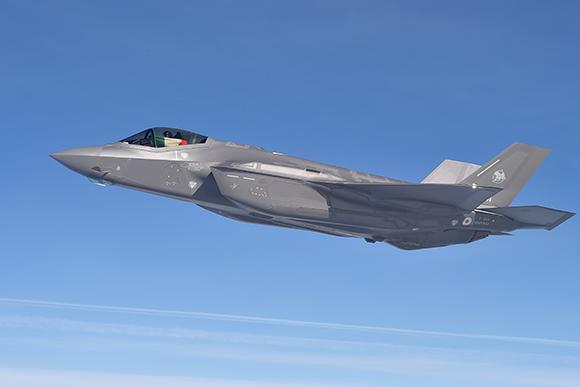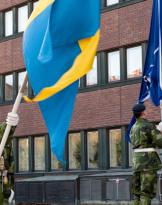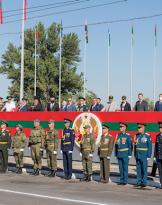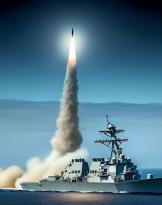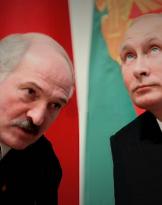Usually the Weapon Associations, the recreational clubs of the various companies and other similar associations do not shine with organizational skills such as to make you jump on the chair when you get home the invitation. Generally, everything is reduced in the usual anachronistic walk among old glories (human and instrumental) and in the end the whole focus of the participants is more focused on the pasta that will come to lunch, to the pin or the usual goblin of the one that turns into a "gitarella "In company instead of a beautiful day from which to return enriched.
Good, last Monday's meeting organized byAermacchi Pilot Club for its members it was the opposite: read the invitation you can visit the visitable of a "special" factory that produces the most technological western fighter aircraft of the next 35 years, which you can talk to its Investigators testers and that perhaps you will even see it take off, it is one of those invitations that make you really jump on the chair when you receive it!
Surely this Club is already in the name of a rather select group of people: all those who have flown an aircraft manufactured by AerMacchi. But there is also room for those who have piloted "only" an SF260 or an AL60 or an MB-308 in the aeroclub of the Aermacchi: you don't need to be a military pilot trained on an 339 MB or an M346 to be a member (and among other things, there is no social fee to pay). Certainly having pilots of airplanes "real" their backbone, makes it possible to group people who share a certain type of cultural setting and a dialectic of a certain level. In any case, I believe that even "non-feathered" accompanying guests of registered pilots have found the meeting very interesting.
As soon as you enter the area at our disposal (an area used in one of the final stages of the production process and that does not stop even during our own visit) the 5 ° example of F35 produced entirely in Italy is waiting for us!
It is there in front of us, exactly in the same position and setting that could be seen in all the newspapers when the then Chief of Staff of the Air Force, gen. sa Preziosa received the first F35 of Italian production. I do not hide the fact that seeing the most talked-about fighter of the last few years and having the memory of that image clearly in my memory, makes a certain impression.
The schedule of the day developed by the president of the Club, gen. sa Giulio Mainini is perfect (on the other hand, if a program devised by the head of the Aeronautical Academy is not perfect ...). It begins with a dissertation by prof. Gregory Alegi (probably the "signature" of the contemporary most authorized to speak and write about airplanes in Italy) on how we went from canvas and wood planes like "Gambarda" to F35, which of the Gambarda it only shares the land on which it is built.
An intervention of the gen. Follows ba Nastasi, commander of the Multipurpose Center Aerospace Aircraft (Ce.Po.VA), which shows us in an essential way what happens in the various structures present in the vast airport grounds that today host a curious but extremely profitable coexistence between the Air Force and Aircraft Division by Leonardo: the FACO (Final Assembly and Check Out). It is a very articulated and heterogeneous cohabitation, since it passes from a civil production site to a defensive flight line for interception "scramble", to 1 ° aircraft maintenance department, with annexes and connected (forgive me the synthesis a bit 'sporty, but if not the article would require the space of Treccani!)
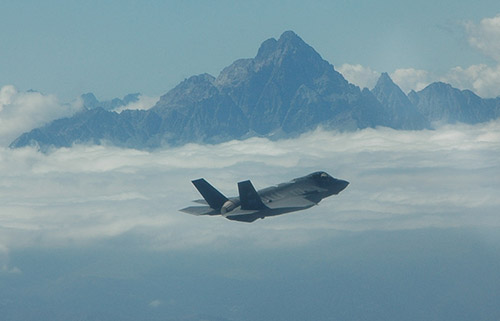
The topic will then be pursued by Ing. Volpe, who is the manager of the plant Leonardo-FACO of Cameri that hosts us, which will also add other details.
In a few minutes the manager explains that we are sitting inside a perfectly equipped structure of machinery and workstations of the highest technological level, which only four years ago was practically a stony ground with four pillars and a roof. We mention how the site interacts with the industrial and scientific fabric of North-Western Italy and synergistic collaborations with all the other sites of the "Leonardo galaxy" scattered throughout Italy. His perhaps most interesting intervention comes when he tells us that the average age of the workforce is only 30 years and among these there are those who in just two years entered new graduates and today are responsible for the qualitative verification of one of the workings of greater responsibility for the entire F35 production cycle. And then the numbers also become interested: about 650 guys fall into this description.
I give myself a moment of distraction, perhaps because the engineer Volpi mentions a school for aeronautical experts in my city and it makes me think of how many words are spent on each media that produce nothing but boys bored from life to 19 years, reduced to look for stimulation between Facebook and the shop of a tattoo artist in times of unemployment between a fixed-term contract of a fast food and another ... Perhaps we should stop to talk about this problem on television, rather than the possible problems of development of a product on which we experiment and develop technologies that then they will also end up in the operating rooms of civil hospitals ...
To hear, then to speak now the major Di Loreto, an experimental pilot who was the first to obtain the F35 license and who is the Italian pilot with the greatest flight experience gained on that aircraft, satisfies the 100% the expectation of all of us guests, also because the F35 he has been there in front of our eyes for over an hour and never how to hear his pilot make him seem alive.
The major Di Loreto speaks in arm, without prepared speeches (after all if there is one in Italy who knows what he is talking about, this is him) but the first thing that surprises is his modesty. On his chest only theTurrita Eagle on the left, a rare Canadian military pilot's license on the right and three "ribbons" in all. He is keen to make it clear that, while bringing to the limit (and sometimes even beyond) one of the technological goals of modern evolved humanity, he is not Superman's brother.
He defines himself (sincerely and convincingly) "a normal pilot who had special training". I believe that no definition can be more perfect, because any pilot MUST have a very "basic" professional profile, while a Tester Tester he must find in his professional training the tool that will allow him to be up to the tasks he will have to face and that sometimes are really unimaginable.
Exactly the opposite (also in this case) of the rude egocentrism of some of his elderly precursors who still pose as "first women" despite not having contributed to the development of anything that is even remotely comparable in terms of technological content to that with which this pilot - who speaks to us with spontaneity and simplicity - is measured daily. And it is also the opposite of the attitude of certain subjects who pretend to be pilots of great experience around some ultralight (not too different, in substance, from the Gambarda a century ago) or around a video game sold as a professional flight simulator, or perhaps by posting the photo of the same major on Facebook. Di Loreto, after appropriate retouching of "photoshop" to replace his face with theirs.
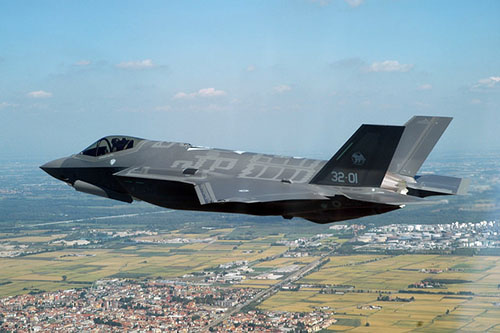
The major Di Loreto alternates in his intervention with a fellow experimenter but engineer and in a few words the two describe to us the real capabilities of F35 (not what is reported by those who saw him only in photography) and convince us that really "that back there "(F35) can succeed in the task so far impossible to replace very different aircraft of absolute excellence in their role.
Technical data? The press kits certainly say more, but here is a summary: 90.000 lbs of thrust come from what is the most powerful engine ever built for a single-engine fighter, 4.000 km of autonomy with a wide range of armament and external loads, capacity of 360 ° reproduction of the situation outside the aircraft through a chain of thermal cameras that totally virtualize the scene outside the aircraft and project it directly on the helmet visor with all the essential data for the conduct of the flight. Multiple fiber optic commands in “fail-safe” technology (if a line is damaged, a back-up immediately intervenes without loss of effectiveness) instantaneous and self-diagnosed; continuous monitoring of the structural integrity of the cell by means of micro surface currents, etc. It is then equipped (but obviously at a higher level) with all those technologies that allow an Aermacchi aircraft (the 346) to interact with other airplanes in flight and / or with the ground operations room or even to act as a "bridge" in the Earth-Edge-Land transmission of mission tactical data and information.
The role ofexperimental engineer, for such an aircraft, which imposes a "different" piloting on the pilot (and which in my opinion will greatly benefit the development of the remote piloted aircraft) is even more important than that of the test pilot, even if the figure of the latter always collects a charm success of chivalrous memory that an engineer will hardly be able to overcome. But it is thanks to their work, to the openness of the flight and operational envelope that they have managed to fine-tune, that F35 will be able to replace A-10, F-18, F-16 and, in Italy AMX, Tornado and the same EFA, when the time comes. No other airplane can succeed in such an undertaking, let alone in Italian production.
And this will be transformed simultaneously into an operational economy that I have never heard of before and that "spread" on the 40 years of the life cycle of a similar type of product will recover much of the huge costs we hear about every day . Of course, if the F35 had been a native national product (like the C-27) I would like much more, but the F35 comes now, they remind us, after a process of government deliberations started in the 1998, and from the 1998 to today I do not know that Italy (not to say Europe) has been able to achieve something as a competitor to this airplane produced in Cameri with a lot of compliments from the Americans ...
Recalling, then, the training program of NATO pilots developed by Italy around the M-346 (v.articolo), the introduction of the F35 will also allow you to see first-hand the effectiveness of those other important investments already spent for Italy's new role in the Air Defense sector in the coming decades.
Those who have come to read up to this point may think that I am the usual journalist working for political or industrial power, but this is not the case at all. First of all, I'm not a journalist. Then, I'm not in the pay of anyone dealing with information or the aviation industry. Finally, as a technician and as a pilot, I too have my doubts about one of the three versions of the F35 (in this case, the "B", with a vertical take-off but not yet of Italian actuality). But for the "A" and "C" versions my opinion, as much as it counts less than one 1 cent coin, is absolutely positive.
The aircraft, which the F35 will replace, are very different in terms of physical and employment characteristics and it is normal that the faces of those present can reveal a certain surprise: we are still mostly pilots too and we have very clear the difference between an A-10 and an F / A 18! In response comes the story of some flight experiences experienced on F35, to get us involved and share, even more than to show us, that the statements made are not just chatter in style Marketing.
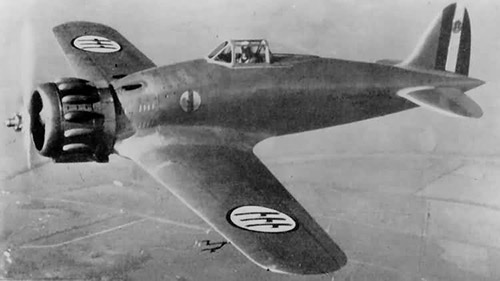 Answering with stories of episodes of life on the air is the typical way of talking about pilots. In this perspective, the brief intervention by gen. Frigerio, commander of the air combat forces. In flight suit because he just landed, he greeted theAermacchi Pilot Club giving us a historical gem that amiably rebukes the prof. Alegi and that demonstrates the fact that those who have real passion and culture of flight can pass from technique to history in less than a second and without prepared speeches. The general reminded us that there is an invisible thread that binds the Aermacchi (around which the Pilot Club) to the F35: it is represented by the name "Lightning" whose Italian name is "Saetta"! And this invisible thread brings us back to the exact exact counterpart of the F35, of 70 years before, the splendid hunt Macchi 200 (photo on the right)!
Answering with stories of episodes of life on the air is the typical way of talking about pilots. In this perspective, the brief intervention by gen. Frigerio, commander of the air combat forces. In flight suit because he just landed, he greeted theAermacchi Pilot Club giving us a historical gem that amiably rebukes the prof. Alegi and that demonstrates the fact that those who have real passion and culture of flight can pass from technique to history in less than a second and without prepared speeches. The general reminded us that there is an invisible thread that binds the Aermacchi (around which the Pilot Club) to the F35: it is represented by the name "Lightning" whose Italian name is "Saetta"! And this invisible thread brings us back to the exact exact counterpart of the F35, of 70 years before, the splendid hunt Macchi 200 (photo on the right)!
Finally, to close the meeting with a goliardic laugh, from the same voice as the gen. Frigerio comes a last nice (as true) anecdote from pilots that we cannot not share with anyone who has read this long article so far: since the major Di Loreto was pilot of Tornado, and the Tornado needs a Navigator, at the 50 ° flock, when they could, they put the biggest Of Loreto in crew with a navigator whose surname is called "Madonna" ...
